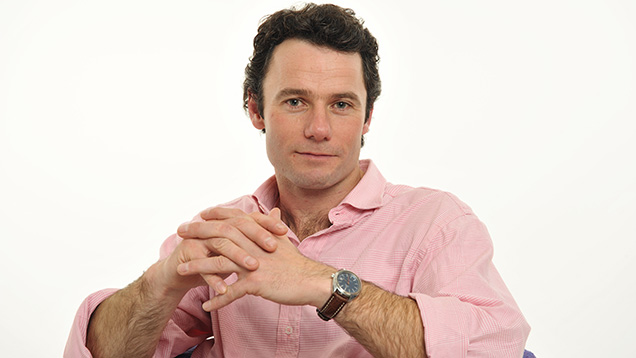Opinion: Is it the end for ‘yellow gold’?
 Ian Pigott
Ian Pigott The harvest of 2015 will not be remembered for bolstering the fortunes of cereal farmers in the UK. It may, however, be a watershed year for oilseed rape.
Many growers are threatening to stop growing the crop, with some questioning its economic viability and others claiming that it has become too demanding on working capital.
Either way, oilseed rape is no longer an automatic selection for an arable farm’s rotation.
It is the 40th anniversary of growing oilseed rape on our farm, and it may well be our last.
Old newspaper clippings from 1975 show a picture of my father standing in a field of “yellow gold”, among a variety called Major.
The journalist hailed oilseed rape as the “future of British farming” – “a lucrative break crop was the ‘holy grail’ for farmers and rapeseed had the potential to be just that”.
But the success of oilseed rape came at a price and, dare I say it, the ban of neonicotinoids may yet prove to be the trigger for repairing some of the damage.
With margins leaner and the challenges of flea beetle in the absence of neonicotinoids, the associated costs of growing rapeseed, such as pigeon control and slug damage in following crops, are making farmers scrutinise its worth more carefully.
Oilseed rape has proved a mercurial talent. Promising so much, producing outstanding performances from time to time, but all too often delivering mediocre gross margins.
Oilseed rape became that gifted but inconsistent sportsman who the manager refuses to leave out of his side.
Rape hectarage has exploded, increasing from 270,000ha in 1984 to 737,000 in 2012.
In a wave of euphoria, increasing demand for vegetable oils and biodiesel, oilseed rape was becoming to the UK what corn is to the Midwest.
I would go so far as to say that in the past 30 years oilseed rape has changed the face of arable farms more than any other factor. Through the 1990s as margins tightened, reducing cost became the focus. Oilseed rape held all the aces.
Why grow four or five crops if you can get away with a rotation of just two or three? Wheat, oilseed rape and possibly one other (forgetting the recent requirements of the three-crop rule).
But timeliness needed to improve for oilseed rape to succeed. Machinery got bigger and forward speed faster. New machines required significant investment. It led to a dramatic consolidation within the industry.
Huge numbers of smaller family farms were absorbed into larger farming businesses.
Farmers competed for hectares over which to spread their costs, keeping rents artificially high. None of these changes would have been possible in the absence of oilseed rape.
Supporters will say that oilseed rape is a wonderful habitat for linnets, reed bunting, grey partridge and pollinators.
Critics will argue that it is a superior habitat for slugs and pigeons. What cannot be disputed is the move to oilseed rape reduced spring cropping and with it crop diversity.
This promoted the incidence of blackgrass, a depletion of mycorrhizal fungi and a general depletion of soil health.
Although the shortcomings of oilseed rape run much deeper than a dependence on neonicotinoids, financial losses do not exonerate farmers of their environmental responsibilities.
Disappointing stories of farmers allowing the ban on neonicotinoids to become a justification for excessive applications of pyrethroid insecticides do little for our industry’s reputation.
It may have taken 40 years to realise that oilseed rape is not the holy grail it was promised to be. But it should not require the banning of an insecticide for farmers to value a diverse rotation.
Ian Pigott
Ian farms 700ha in Hertfordshire. The farm is a Leaf demonstration unit. He is also the founder of Open Farm Sunday.
